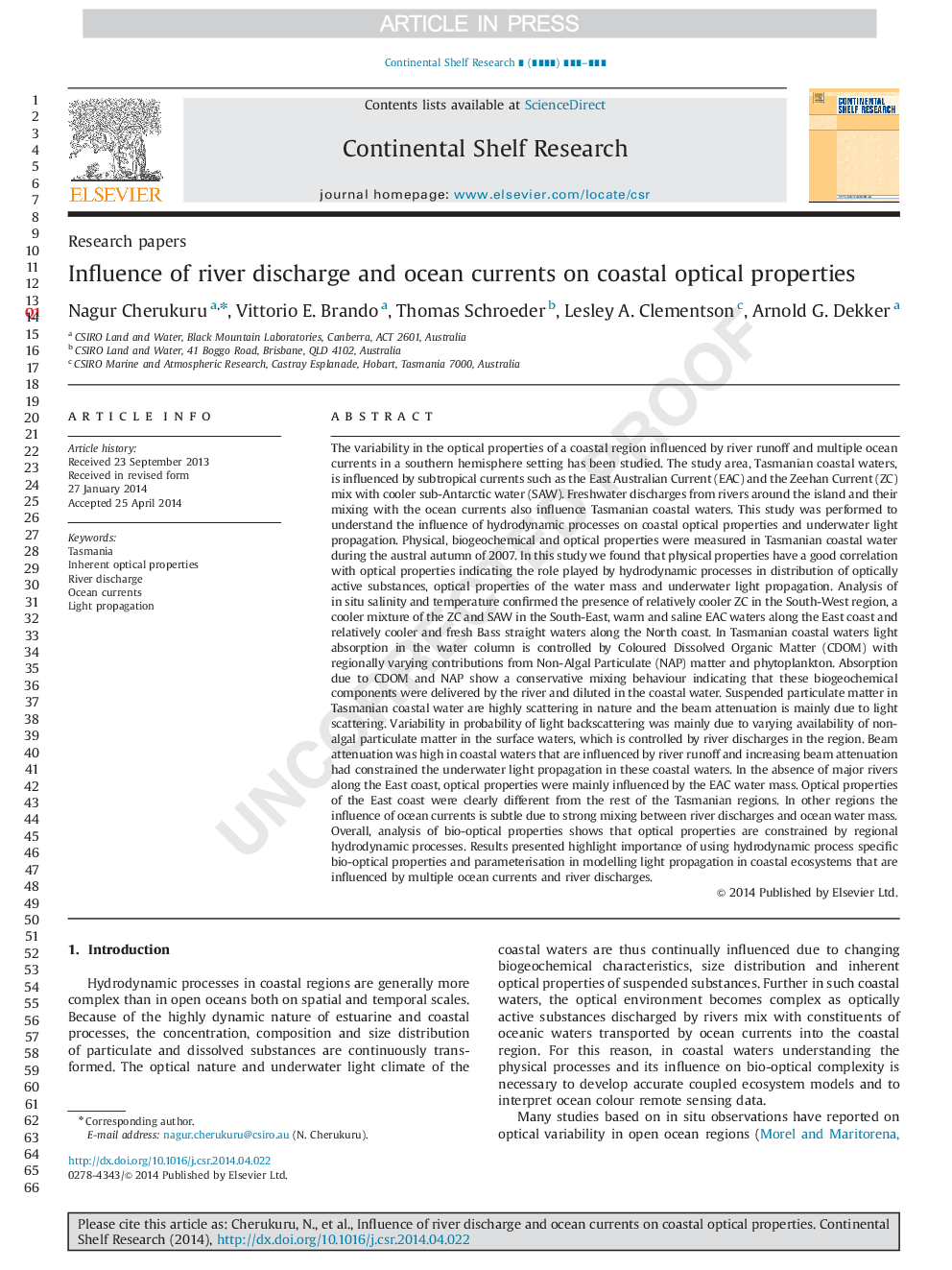| Article ID | Journal | Published Year | Pages | File Type |
|---|---|---|---|---|
| 6383200 | Continental Shelf Research | 2014 | 16 Pages |
Abstract
The variability in the optical properties of a coastal region influenced by river runoff and multiple ocean currents in a southern hemisphere setting has been studied. The study area, Tasmanian coastal waters, is influenced by subtropical currents such as the East Australian Current (EAC) and the Zeehan Current (ZC) mix with cooler sub-Antarctic water (SAW). Freshwater discharges from rivers around the island and their mixing with the ocean currents also influence Tasmanian coastal waters. This study was performed to understand the influence of hydrodynamic processes on coastal optical properties and underwater light propagation. Physical, biogeochemical and optical properties were measured in Tasmanian coastal water during the austral autumn of 2007. In this study we found that physical properties have a good correlation with optical properties indicating the role played by hydrodynamic processes in distribution of optically active substances, optical properties of the water mass and underwater light propagation. Analysis of in situ salinity and temperature confirmed the presence of relatively cooler ZC in the South-West region, a cooler mixture of the ZC and SAW in the South-East, warm and saline EAC waters along the East coast and relatively cooler and fresh Bass straight waters along the North coast. In Tasmanian coastal waters light absorption in the water column is controlled by Coloured Dissolved Organic Matter (CDOM) with regionally varying contributions from Non-Algal Particulate (NAP) matter and phytoplankton. Absorption due to CDOM and NAP show a conservative mixing behaviour indicating that these biogeochemical components were delivered by the river and diluted in the coastal water. Suspended particulate matter in Tasmanian coastal water are highly scattering in nature and the beam attenuation is mainly due to light scattering. Variability in probability of light backscattering was mainly due to varying availability of non-algal particulate matter in the surface waters, which is controlled by river discharges in the region. Beam attenuation was high in coastal waters that are influenced by river runoff and increasing beam attenuation had constrained the underwater light propagation in these coastal waters. In the absence of major rivers along the East coast, optical properties were mainly influenced by the EAC water mass. Optical properties of the East coast were clearly different from the rest of the Tasmanian regions. In other regions the influence of ocean currents is subtle due to strong mixing between river discharges and ocean water mass. Overall, analysis of bio-optical properties shows that optical properties are constrained by regional hydrodynamic processes. Results presented highlight importance of using hydrodynamic process specific bio-optical properties and parameterisation in modelling light propagation in coastal ecosystems that are influenced by multiple ocean currents and river discharges.
Related Topics
Physical Sciences and Engineering
Earth and Planetary Sciences
Geology
Authors
Nagur Cherukuru, Vittorio E. Brando, Thomas Schroeder, Lesley A. Clementson, Arnold G. Dekker,
